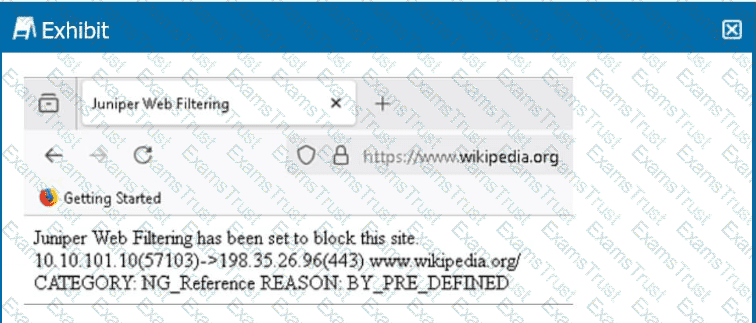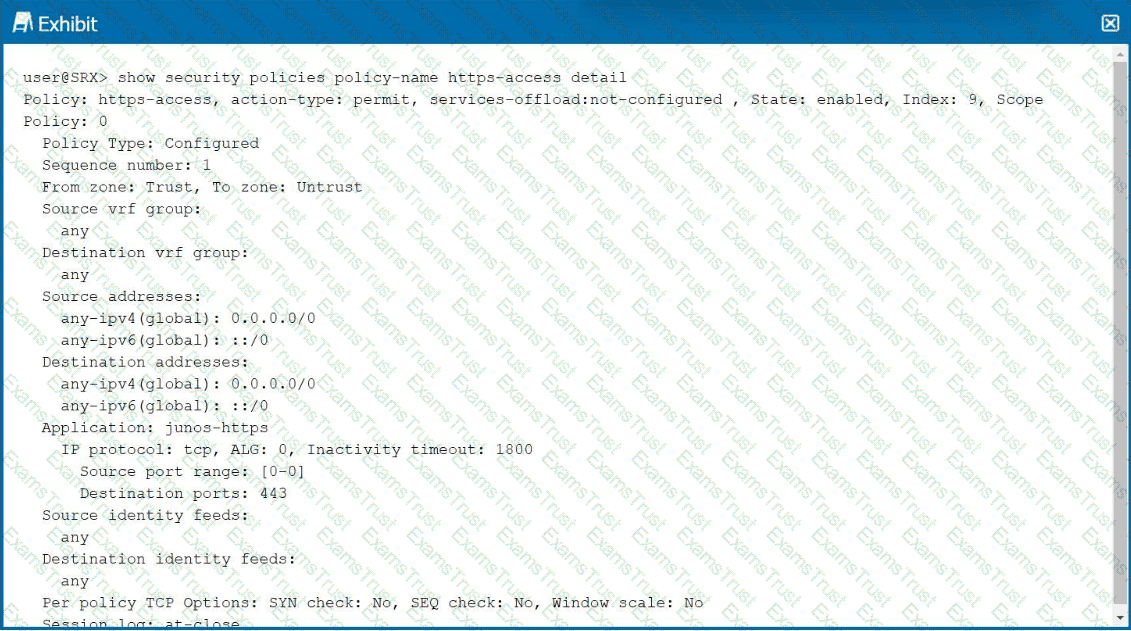You want to use Avira Antivirus.
Which two actions should you perform to satisfy this requirement? (Choose two.)
Which two statements about SRX Series zones are correct? (Choose two.)
You are not able to ping an interface on an SRX Series Firewall.
Which two actions should you take to solve this issue? (Choose two.)
Which two statements are correct about security zones? (Choose two.)
What is a purpose for creating multiple routing instances on an SRX Series Firewall device?
Click the Exhibit button.

Referring to the exhibit, which two statements are correct? (Choose two.)
Which security policy action will cause traffic to drop and a message to be sent to the source?
You are asked to enable trace options to debug the packet flow.
In this scenario, which flag would you configure at the [edit security flow traceoptions] hierarchy?
Which two statements about management functional zones are correct? (Choose two.)
You are troubleshooting traffic traversing the SRX Series Firewall and require detailed information showing how the flow module is handling the traffic.
How would you accomplish this task?
You want to show the effectiveness of your SRX Series Firewall content filter.
Which operational mode command would you use in this scenario?
What are two system-defined zones created on the SRX Series Firewalls? (Choose two.)
Content filtering supports which two of the following protocols? (Choose two.)
What is the purpose of assigning logical interfaces to separate security zones in Junos OS?
Click the Exhibit button.

Referring to the exhibit, which two statements are correct? (Choose two.)
Which UI enables you to manage, monitor, and maintain multiple firewalls using a single interface?
Which two statements are correct about security zones on an SRX Series device? (Choose two.)
You need to capture control plane traffic on a high-end SRX Series device.
How would you accomplish this task?
What is transit traffic in the Junos OS?